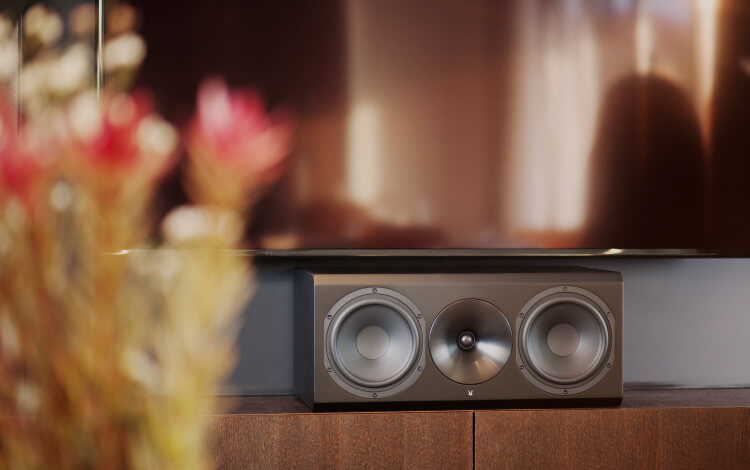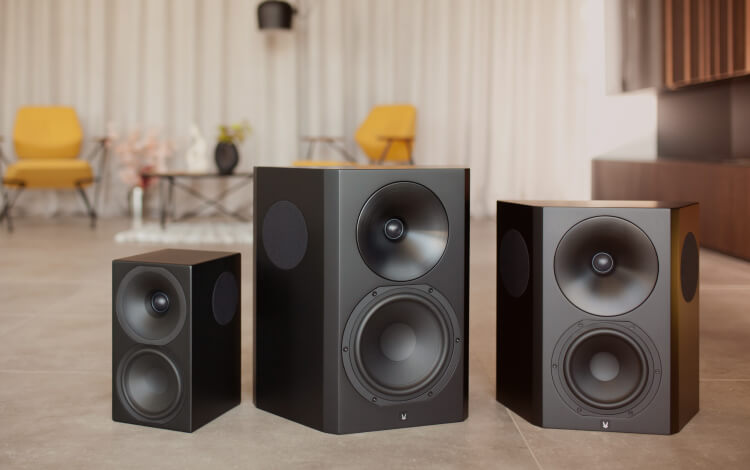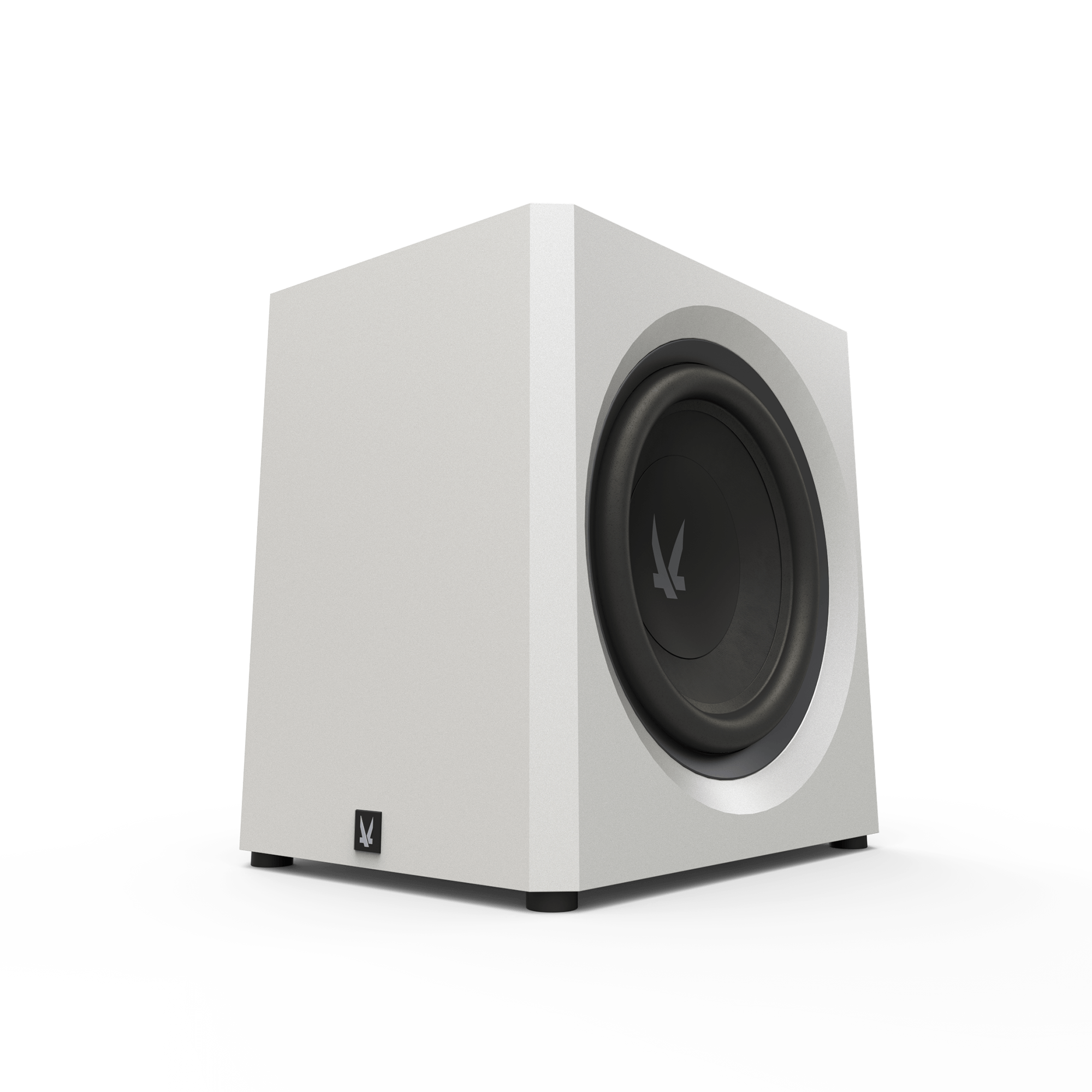BEST BUY!
Norwegian Arendal is becoming a well known name for most of our readers at this point in time and their 1961 1S is the company’s entry level subwoofer. Even though this is their entry-level subwoofer, Arendal has made sure it feels nothing like a budget construction.
The box is slightly tall and slim and has a coarsely painted matte finish that is nice to touch. You can choose between black or white, both in the matt finish. The cabinet which is made from HDF, feels solidly built and has elegant slanted sides.
On the side of the box sits a 12.2” large subwoofer driver snuggly sunken into the box. The construction is Arendal’s own and a lot of time has been put down to get a subwoofer that is easy to drive and that sounds precise in its playback. The driver has a rigidly suspended paper-cone with a rubber surround and inverted dust cap. If you want to protect the driver, they have included a grille that is attached by magnets.
The box stands stable on its rubber pucks that are screwed in place with M6 bolts.
The amplifier is the most outstanding part of the subwoofer, at least from a functional standpoint, as it is very discrete from a visual point of view. Connectivity is only available through the RCA inputs that are of high quality, while the insides are really flexing muscles. When we turn on the subwoofer the 1,8” large LCD-color display lights up. All adjustments are made with a wheel and two buttons, where you turn around the wheel and click through the menu adjustments. There is a lot of turning the wheel when different values are set, as the when has a low gearing ratio, while on the other side it’s difficult to run past the wanted values.
Here you can amongst other things choose crossover frequency and even slope on the filter as well as Q-value. There is also a stepless phase adjustment and a subsonic filter that can be adjusted to 12, 16, 20, 25 and 32 hertz.
The most interesting function is their 3-band parametric equalizer though, that lets you adjust three frequencies and thereafter lets you adjust them up or down, with a chosen Q-value, which is the steepness around the point of adjustment. If you have the ability to do a frequency sweep with the subwoofer in your room, you can in other words adjust the sound with great precision with Arendal’s EQ. The quick version is using one of the two premade EQ presets.
You can choose when the amplifier should go into sleep mode in 5-minute increments between 5 and 60 minutes. The sensitivity for the auto-on can even be adjusted in three steps. If you want you can connect two different sources to the amplifier, for example, if you have a music setup and a home cinema setup in the same room.
Listening impressions
Arendal has an incredibly dark and heavy thump that can make most floors vibrate. The subwoofer has the nice ability to disappear completely from its physical placement and just exist in the room, due to the solidly built box and completely free from distorting sounds.
If we adjust the crossover frequency higher, this subwoofer continues to play nicely even paired with small speakers, but the massively deep bass can make some problem frequencies stand out in your room. In other words, it is great that we have a 3-band parametric equalizer to work with, to make the frequency response linear. After some tinkering, the room problems are much less noticeable. This may not be a super-tight bass, but if it even feels slightly dull when listening out of the box, it is guaranteed to be an issue with sub-optimal adjustments.
Arendal is at its best when playing heavier rock and electronic music. Antiloops In My Mind is being dished out with the fury that it demands, and when the break comes, many subwoofers tend to collapse from the deep bass about to follow. Arendal does not, it digs all the way down and gives the song its correct fundament. Correctly set up it should not have any issues with distinguishing the bass from the electronic bass on The Sounds lovely song “Living in America”.
Three quick:
- DSP-adjustments in display
- 12,2” subwoofer
- Best sound
Plus:
- The total package!
- The sound
Minus:











